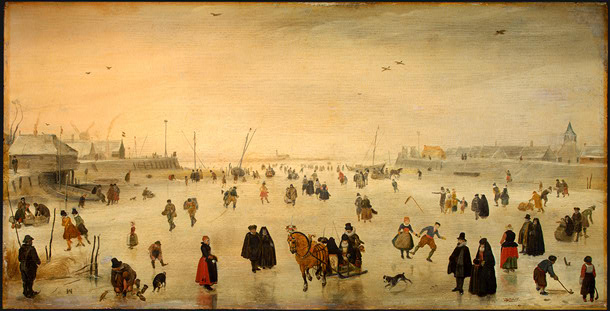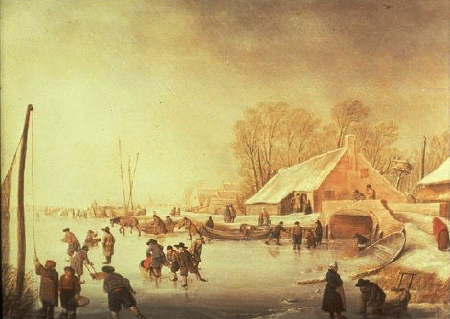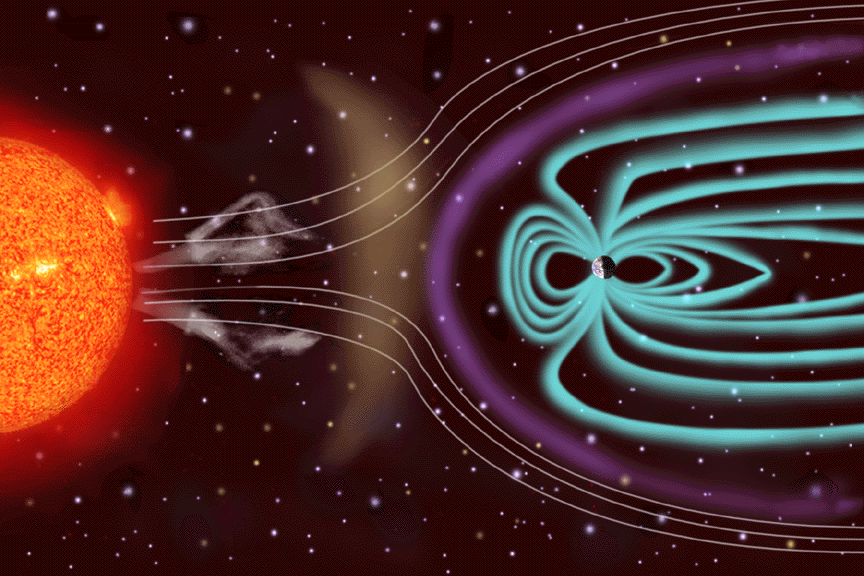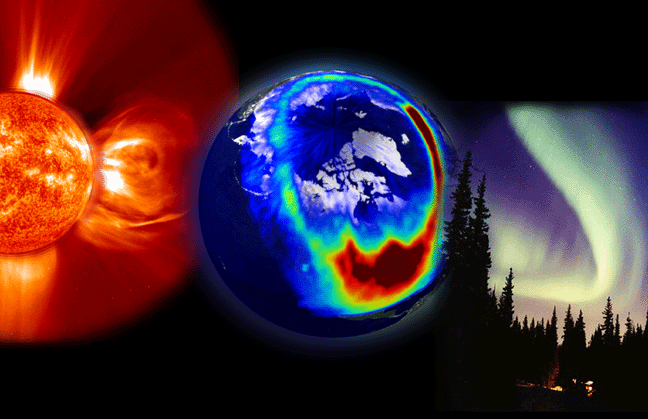
The Sun can influence the Earth's environment in a variety of ways and on different time scales.
But how strong the Sun's influence is and which mechanism is playing the main role is a matter of current research. The Sun's influence on the Earth's climate can not be measured directly. However, good correlations have been found between different proxies of solar activity and climate records, for example, between the concentration of 14C in tree rings and glacier fluctuations (Fig.1).

Fig. 1. Sunspot number (green line) and the concentration of 14C in tree rings (red) as proxies of solar activity versus glacier fluctuations (white circles; after Eddy 1976, Nature 192, 1189).
Another example is the the coincidence of the so called Maunder minimum (a period in the second half of the 17th centuty when hardly any sunspots were seen during more than 50 years, see Fig. 1) with the Little Ice Age in Europe, a time of severe cold and great hardship, when the Thames froze regularly and alpine glaciers grew deep into the valleys. The latter is greatly illustrated by painters of Dutch school, showing winter scenes, ice-covered canals, figures skating and sledging (Fig. 2).
 |
 |
Fig. 2. Two paintings of Hendrick Avercamp, one of the first landscape painters of the 17th-century Dutch school, famous for his winter landscapes.
The Sun influences the Earth also on shorter time scales. For example, the solar magnetic field in the heliosphere, as well as solar wind and energetic particles affect the Earth's magnetosphere and ionosphere (see Fig. 3). These effects can be directly observed and measured (Fig. 4).

Fig. 3. The Sun's magnetic field and releases of plasma directly affect Earth and the rest of the Solar System. Solar wind shapes the Earth's magnetosphere and magnetic storms are illustrated here as approaching Earth. These storms, which occur frequently, can disrupt communications and navigational equipment, damage satellites, and even cause blackouts. The white lines represent the solar wind; the purple line is the bow shock line; and the blue lines surrounding the Earth represent its protective magnetosphere. The magnetic cloud of plasma can extend to 50 million km wide by the time it reaches Earth. (Image source: SOHO)

Fig. 4. This composite image presents the three most visible elements of space weather: a storm from the Sun, aurora as seen from space, and aurora as seen from the Earth. The solar storm is a corona mass ejection (CME) composite from EIT and LASCO images, both on SOHO. The middle image from Polar's VIS imager shows charged particles as they spread down across the U.S. during a large solar storm event on July 14, 2000. Lastly, Jan Curtis took this image of an aurora display in Alaska, the visible evidence of space weather that we see here on Earth. (Image source: SOHO)